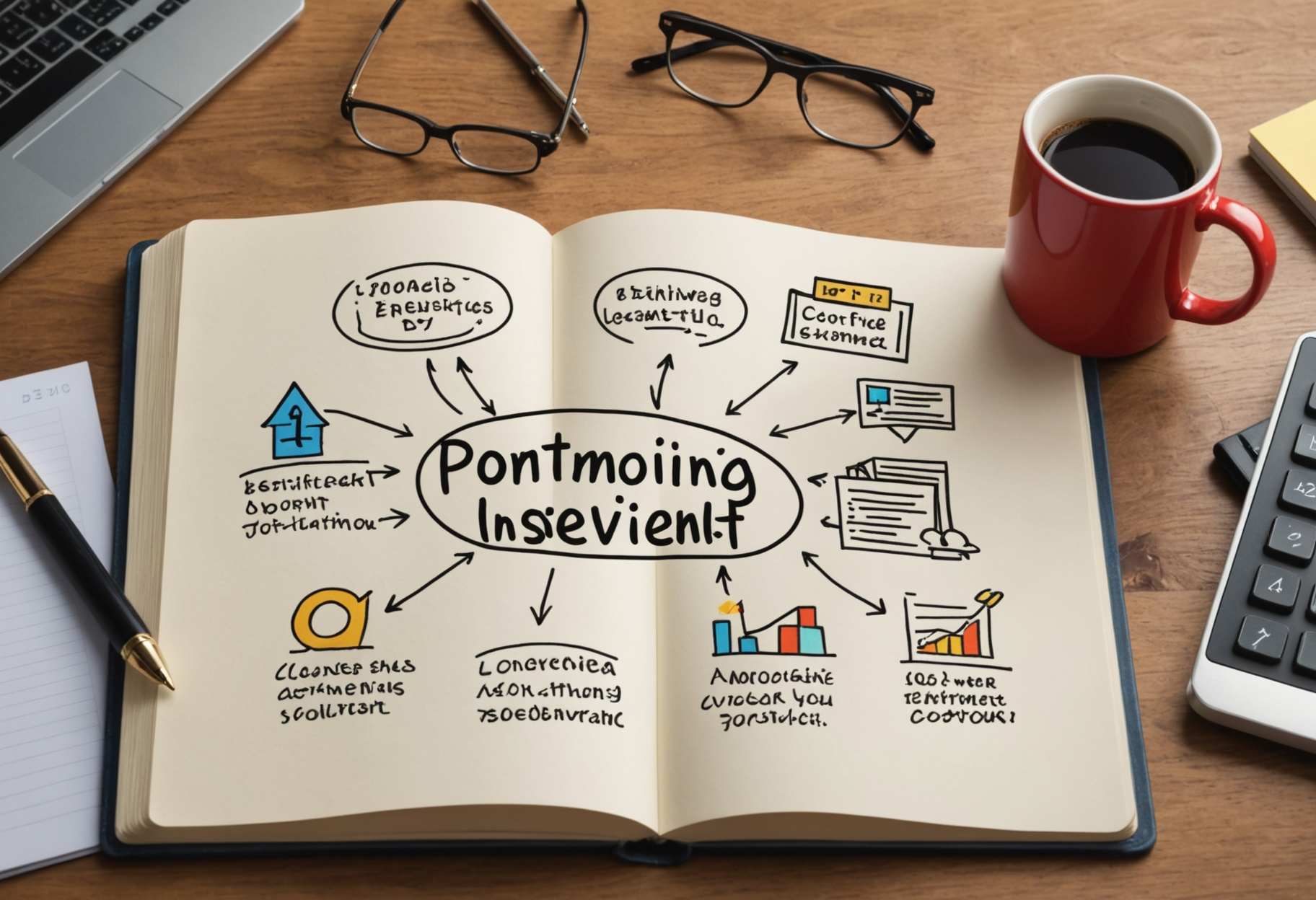
On Nov. 4, Democrats swept the major races in this year’s elections, delivering a check on President Trump’s second term — and a negative verdict on his economic leadership so far.
Ever since, Trump has been trying to figure out how to regain the upper hand on cost-of-living issues. Asked about voter perceptions of an "affordability crisis,” he dismissed them as “a con job by the Democrats,” insisting that polls showing otherwise are “fake” and that America now has “the greatest economy we’ve ever had.”
“I don’t want to hear about the affordability,” the president said.
But at the same time, Trump’s actions may be speaking louder than his words. In recent days, he’s announced a flurry of policies designed to ease the pressure on household budgets. Here’s everything you need to know about the president’s three biggest proposals.
50-year mortgages
What is Trump proposing? On Saturday, Trump took to his Truth Social network to post side-by-side portraits of himself and Franklin D. Roosevelt beneath the banner “Great American Presidents.”
Under FDR were the words “30-year mortgage.” And under Trump? “50-year mortgage.”
Two days later, Fox News’s Laura Ingraham asked Trump whether a 50-year mortgage was “really a good idea” to lower housing costs that are “still out of reach” for many Americans.
“It’s not even a big deal,” Trump replied. “You go from 40 to 50 years…”
“30 years,” Ingraham interjected, correcting the president.
“From 30 — some people had 40 — and now they have a 50,” Trump continued. “All it means is you pay less per month. You pay it over a longer period of time. It’s not, like, a big factor. It might help a little bit."
Where is this coming from? Politico reported on Monday that it was Bill Pulte, Trump’s Federal Housing Finance Agency director, who “talked the president” into floating a 50-year mortgage plan — without consulting Trump’s “blindsided” policy aides.
“[Pulte] just sold POTUS a bill of goods that wasn’t necessarily accurate,” one source familiar with the situation told Politico. “He said ‘FDR did it, you can do it, it’s gonna be a big thing.’ But he didn’t tell him about all the unintended consequences.”
Housing costs have indeed soared in recent years. Since 1991, the average age of first-time U.S. homebuyers has risen from 28 to 40, according to the latest data from the National Association of Realtors; they now need to earn “$112,131 per year to afford the median priced home — roughly $25,000 more than the typical household makes.” Meanwhile, mortgage rates have more than doubled since 2020.
A 50-year mortgage aims to address housing affordability by giving borrowers two extra decades to repay the bank. The longer you have to pay off your home loan, the lower each monthly payment can be.
What do experts say? Experts point out two downsides of a 50-year mortgage. The first is that mortgage payments also include interest — so the more payments you have, the more interest you pay (especially in the early years of a loan, when almost the entire payment is interest).
In fact, estimates show that a 50-year borrower would pay about twice as much interest as a 30-year borrower over the course of their loan. For most U.S. homebuyers, that equals a few hundred thousand extra dollars.
The second drawback is that many borrowers would never reach the point where they own their home outright. If you’re 40 now, a 30-year mortgage would mean you stop making payments when you’re 70 — with years of retirement ahead of you. A 50-year mortgage, however, would mean you continue making payments throughout retirement — and only stop when you’re 90.
For the record, many prominent MAGA Republicans have objected to Trump’s proposal for these very reasons. "I don’t like 50-year mortgages as the solution to the housing affordability crisis,” Georgia Rep. Marjorie Taylor Greene wrote on X. “It will ultimately reward the banks, mortgage lenders and home builders while people pay far more in interest over time and die before they ever pay off their home. In debt forever, in debt for life!"
Could it actually happen? According to ABC News, “the Qualified Mortgage rule within the Dodd-Frank Wall Street Consumer Protection Act, passed to protect consumers after the 2008 financial crisis, currently does not allow the federal government to create a 40 or 50-year mortgage, so President Trump would have to find an innovative way to bring his mortgage plan to life.”
$2,000 tariff checks
What is Trump proposing? For months, Trump has mused about sending every American a “rebate” from what he has described as the "trillions of dollars" in tariff revenue his administration has collected since imposing broad new import levies earlier this year.
The president revived that idea in a Nov. 9 Truth Social post, claiming that his tariffs are bringing in “Trillions of Dollars” that will “soon” be used to “begin paying down our ENORMOUS DEBT,” adding that “a dividend of at least $2000 a person (not including high income people!) will be paid to everyone."
The following day, Trump vowed that his administration would first pay $2,000 to "low and middle income USA Citizens" and then use the remaining tariff revenues to "substantially pay down national debt."
Where is this coming from? Trump has long considered tariffs a cure-all for the U.S. economy, vowing that they will stop foreign governments from “ripping us off” — and since taking office in January, he implemented them on a scale not seen in the U.S. in almost a century. According to the Yale Budget Lab, America’s current overall average tariff rate is 18%, the highest since 1934.
The administration has proposed various other uses for this new tariff revenue, including reducing the country’s deficit and offsetting the cost of the GOP tax and spending bill Trump signed into law in July. But $2,000 rebate checks have taken center stage after the party’s big 2025 Election Day losses, with the administration now “exploring all legal options to get that done,” according to White House press secretary Karoline Leavitt.
"The White House is committed to making that happen," Leavitt told reporters Wednesday. “I don’t have a timeline for you or any further details, but I can confirm for you that the president made it clear he wants to make it happen, and so his team of economic advisers are looking into it, and when we have an update, we’ll provide one.”
What do experts say? Experts note that Trump’s current tariffs are already costing U.S. households anywhere from $1,600 to $2,600 per year in the form of higher prices, according to independent estimates. So one way to put more money in people’s pockets would be to remove them.
Barring that unlikely scenario, Erica York, the Tax Foundation’s vice president of federal tax policy, estimated in a Nov. 9 X post that Trump’s proposal — which she framed as a $2,000 tariff dividend for all 150 million U.S. adults earning under $100,000 per year — would cost nearly $300 billion.
That’s more than the $216 billion in net revenue that Trump’s tariffs will generate in 2026, according to the Tax Foundation’s projections, and more than the $120 billion they’ve generated so far.
Meanwhile, the Committee for a Responsible Federal Budget has calculated that Trump’s tariff checks could cost $600 billion if they are “designed like the COVID-era Economic Impact Payments, which went to both adults and children.”
Could it actually happen? A $2,000 tariff dividend check would require congressional approval — and lawmakers have already passed on that idea, according to Joseph Rosenberg, a senior fellow at the Urban Institute-Brookings Institution Tax Policy Center.
When members of Congress approved the One Big Beautiful Bill Act in July, "they had the ability to include a tariff dividend, but they didn’t," Rosenberg told Politifact.
Elsewhere, Treasury Secretary Scott Bessent has speculated about a possible workaround: issuing the tariff dividend in the form of tax credits rather than direct payments.
"It could be just the tax decreases that we are seeing on the president’s agenda: no tax on tips, no tax on overtime, no tax on Social Security, deductibility of auto loans," Bessent told ABC News.
Direct health care payments
What is Trump proposing? In another Truth Social post, this one from Nov. 8, Trump wrote that he was "recommending to Senate Republicans that the Hundreds of Billions of Dollars currently being sent to money sucking Insurance Companies in order to save the bad Healthcare provided by ObamaCare, BE SENT DIRECTLY TO THE PEOPLE SO THAT THEY CAN PURCHASE THEIR OWN, MUCH BETTER, HEALTHCARE, and have money left over."
Trump elaborated a few days later, telling Ingraham that "instead of going to the insurance companies, I want the money to go into an account for people where the people buy their own health insurance.”
“It's so good,” he promised. “The insurance will be better. It'll cost less."
Where is this coming from? The recent government shutdown centered, in part, on health insurance.
Subsidies that have long lowered the cost of health care plans purchased through the Affordable Care Act are set to expire in January, which would cause premiums to spike dramatically for millions of Americans.
Democrats wanted those subsidies extended as part of any bill to end the shutdown. Republicans said they were willing to discuss the subsidies, but only after the government reopened. A group of Senate Democrats eventually agreed to end the shutdown after Republicans promised a December floor vote on legislation that would extend the subsidies.
Trump’s proposal for direct health insurance payments is seen as a signal of support for the emerging GOP alternative: redirecting ACA subsidy funds into flexible spending accounts (FSAs) or health spending accounts (HSAs) that let people set aside money before taxes to pay for out-of-pocket medical expenses, such as deductibles and copayments.
What do experts say? Experts tell Politico that such accounts would give consumers more choices — while also sending the ACA into a potential “death spiral.”
“Healthy people could get much cheaper insurance that has medical underwriting and doesn’t cover preexisting conditions, but that would leave much sicker people in the ACA pool, and likely send it into a death spiral,” said Larry Levitt, executive vice president for health policy at KFF, a nonpartisan research organization.
The argument here is that if “younger, healthier consumers choose such so-called junk health plans — with lower costs and less robust coverage — or don’t use the money for health insurance, it could throw off the balance of risk and prompt insurers to exit the market entirely,” according to Politico.
Experts are also skeptical that giving cash directly to Americans to purchase health care — rather than giving it to health insurers in the form of subsidies, like the ACA — will “bend” the overall cost curve. Typically, consumers don’t have all the price data they need to shop around and find the most cost-effective plans.
“The idea that consumers will be more cost-sensitive and make good choices is really overblown,” Robert Kaestner, a research professor at the Harris School of Public Policy at the University of Chicago, told Politico.
Could it actually happen? Senate Majority Leader John Thune has promised Democrats a vote on subsidies by the second week of December. It’s unclear whether that means multiple votes on competing Democratic and Republican proposals or a bipartisan approach.
In the meantime, Republican Sen. Bill Cassidy of Louisiana says he’s crafting FSA legislation, while his colleague Rick Scott of Florida says he’s working on HSAs. The big difference between the two types of accounts is that unused HSA funds roll over from year to year; FSA funds expire. HSA funds can also pay for a broader range of services.
LATEST POSTS
- 1
 Promising Speculation Bearings for Portfolio Development in 2024
Promising Speculation Bearings for Portfolio Development in 2024 - 2
 40代で大人の恋愛模様を彩る役で目を引く中村ゆり。『終幕のロンド』ヒロインで見せる切なさと美しさ #エキスパートトピ(斉藤貴志) - エキスパート - Yahoo!ニュース
40代で大人の恋愛模様を彩る役で目を引く中村ゆり。『終幕のロンド』ヒロインで見せる切なさと美しさ #エキスパートトピ(斉藤貴志) - エキスパート - Yahoo!ニュース - 3
 The Best Internet based Courses for Expertise Improvement
The Best Internet based Courses for Expertise Improvement - 4
 5 State of the art Advancements in Computer generated Simulation
5 State of the art Advancements in Computer generated Simulation - 5
 「100円分の回数券」に払い戻し手数料が「200円」“損になる”ことも「手数料」は誰がどう決めるのか 弁護士が解説(関西テレビ)
「100円分の回数券」に払い戻し手数料が「200円」“損になる”ことも「手数料」は誰がどう決めるのか 弁護士が解説(関西テレビ)
 Overhaul Your Rest: Tips for a Serene Evening
Overhaul Your Rest: Tips for a Serene Evening TBS近藤夏子アナ、ラジオで妊娠生報告 産休&育休入りへ(オリコン)
TBS近藤夏子アナ、ラジオで妊娠生報告 産休&育休入りへ(オリコン) Step by step instructions to Open a Lovely Waterway Voyage Insight: Conveniences, Administrations, and Elite Offers
Step by step instructions to Open a Lovely Waterway Voyage Insight: Conveniences, Administrations, and Elite Offers 3 Must-Change Settings for iPhone Clients: Safeguard Yourself !
3 Must-Change Settings for iPhone Clients: Safeguard Yourself ! バレエを“やらない人”が老舗バレエ用品メーカー「チャコット」で買い物をする理由 今やバレエだけじゃない意外な成長柱(東洋経済オンライン)
バレエを“やらない人”が老舗バレエ用品メーカー「チャコット」で買い物をする理由 今やバレエだけじゃない意外な成長柱(東洋経済オンライン) 露天風呂に柵、半額補助へ クマ被害多発受け 観光庁(時事通信)
露天風呂に柵、半額補助へ クマ被害多発受け 観光庁(時事通信) Make your choice for the music application with the most amicable connection point!
Make your choice for the music application with the most amicable connection point! サッカー元日本代表・吉田麻也に第2子男児が誕生「家族へようこそ、スーパーボーイ」 インスタグラムで発表「本当に嬉しいです!」(THE ANSWER)
サッカー元日本代表・吉田麻也に第2子男児が誕生「家族へようこそ、スーパーボーイ」 インスタグラムで発表「本当に嬉しいです!」(THE ANSWER) Find the Standards of Viable Nurturing: Supporting Blissful and Strong Kids
Find the Standards of Viable Nurturing: Supporting Blissful and Strong Kids













